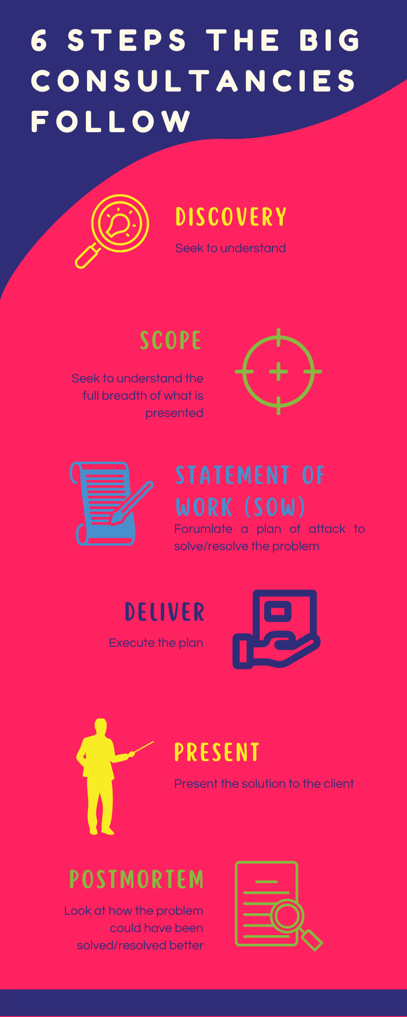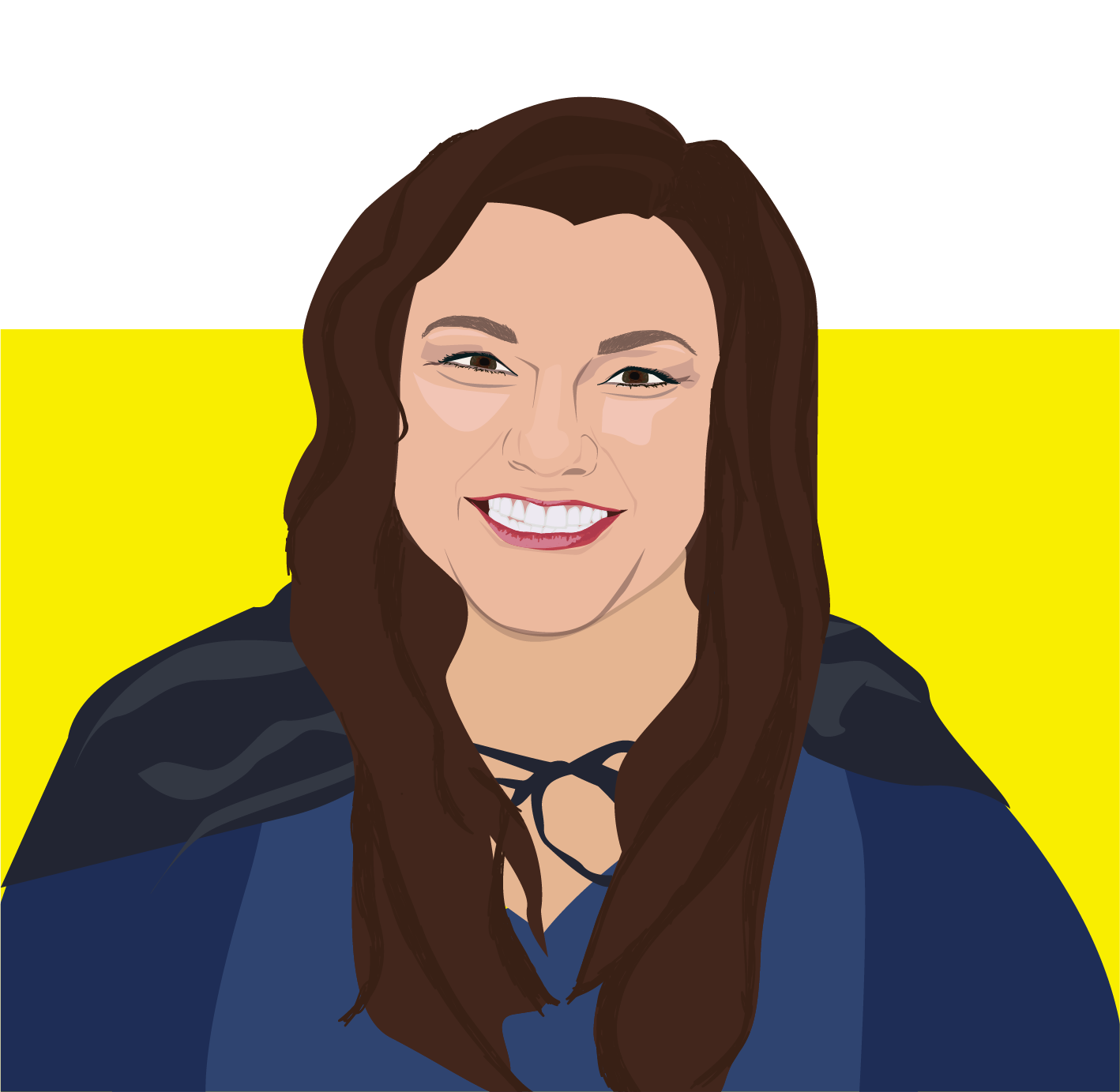Thriving with a Business Purpose Advisor and Consultant
In today's competitive and ever-evolving market, organizations must go beyond mere profit...
The large consultant companies, Accenture, Deloitte, PwC, Grant Thornton, etc. provide the same services as you do in your small or solo consultancy. You don’t get the same rates and your clients are a different size, but you provide the same types of services.
What the large consultancies provide, aside from their name, is a disciplined approach (some call it methodology) to addressing problems. Each engagement begins with a “discovery” phase (it is called various names by each of them) but it is a period where the specific problem(s) to be addressed are “scoped”. The discovery phase is typically a fee-based engagement and can take from days to months depending on the situation.
During discovery, scoping is done. This is the process by which what will and will not be addressed is defined. This then becomes the backdrop for the Statement of Work (SOW) which then precedes the real work. The SOW will define the work to be done, the expected timeline, deliverables, goals, milestones, etc. The resources and hours will also be defined and from that, the commercials (cost estimates) will be developed.
The methodology has been developed over the years to provide a systematic mechanism for the consultancies to address problems, break them into manageable pieces, use the past to forecast efforts and thus, raise confidence in the result. Lessons learned, over/underestimates, and other observables are factored into continuous improvement of the methodology to provide repeatable processes and, most importantly, high confidence in the results.
It is this methodology, a consistent repeatable mechanism to approach problems, that enables the large consultancies to employ a vast number of diverse resources, with different levels of experience and different degrees of expertise to provide results.

In general, a new entry-level consultant to a firm will take 2-3 years of exposure to the firm’s methodology to be considered capable of leading a client engagement. In that timeframe, the consultant will work a variety of engagements under different managing consultants with various clients. They will participate in discovery, SOW generation, delivery, client presentations, and postmortems. They will be observed, coached, and mentored by experienced consultants within their respective practices.
While generalizations are just that, this is the mechanism employed today and for the past few decades by large consultancies. Their expansion (through outright expansion and through consolidation) bears witness to the fact that the mechanism described above has withstood the test of time.
My first engagement as a consultant was for Donaldson, Lufkin & Jenrette (DLJ) acquired in 2000 by Credit Suisse First Boston for 11.5 billion. The deal equalized CSFB against its two main competitors, which were Goldman Sachs and Morgan Stanley.
For 22 months, I worked as a consultant (1 of a team of 37) reporting to the Managing Consultant at the firm. We worked for the EVP out of Park Avenue, NYC. Over that time, we applied the firm's methodology to several different problems around the DLJDirect business trading platform. This platform served professional traders in the same vein as E*Trade allows individuals to trade but with far more sophisticated customization for algorithms for program trading.
During those 22 months, we submitted 7 project proposals based on 4 ongoing Discovery projects. The disciplined approach to documenting findings and segmenting questions and requests from DLJ led to project proposals being able to set achievable deliveries against details of problem scopes. Each of the scope documents was approved by EVP at DLJ prior to commencement of execution.
We had over 56 individual consultants move through the projects over the 22 months I was involved. Each consultant was able to come up to speed by reading the documentation and, based on their specialization, was able to contribute in the first meeting with the client.
The client saw a new face with context, understanding, and the ability to contribute in the first meeting. This was a direct result of the methodology employed by the firm to control and manage engagements with clients.
As we have said in past posts and conversations, it comes down to people, process, and data. The large consultancy methodology is their process – the process of rendering services. When new folks come to a firm there is a period of training (coaching, mentoring, and the reality of on-the-job exposure) so that the process is known and understood. Data is collected which provides a mechanism for improvement in the process and people brought to the firm. Each of the large consultancies has a similar reputation for success, and they charge about the same rates. The difference between them is "who knows who" (a.k.a. relationships) between the clients and consultants.
So, establish your process and develop it with measures so you can identify progress, shortfalls, and issues. Then ensure your people know and understand the process and apply it. View your process as a living thing that needs nurturing and care and training. Each of your engagements should be analyzed to identify the positive so it can be promulgated and the negative so measures can be put in place to avoid repetition.
Consistent application of your process will make consistent results achievable in a measured manner. That will yield predictable results for your clients. This, in turn, will increase the lifetime value of each client and lead to referrals for new business. Finally, as we discussed in the blog "Transitioning the Organization Beyond the Founder(s)", developing a documented and followed process relieves the consultancy from being tethered to one individual or consultant.
In today's competitive and ever-evolving market, organizations must go beyond mere profit...

The threat landscape in today’s world is ever evolving. Just as cybersecurity experts get a read on...